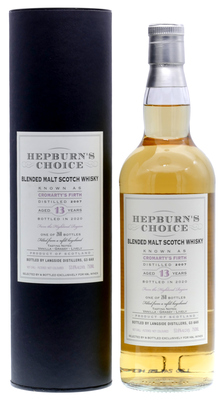|
|
Release Notes
The Dalmore Distillery is in Alness, a short drive north from Inverness on the firth of Cromarty. The North Coast boasts one of the most beautiful sceneries in all of Scotland and is quickly becoming a world-renowned destination for Scotch lovers and driving enthusiasts alike. Amazingly, this is the first Dalmore we've ever bottled for the shop. We don't see much Dalmore on the open market at all and when we do it's nearly triple the price we'd ever pay. The Dalmore brand gets a bad rap from some of the whisky cognoscenti, thanks to their high prices, low abvs and ubiquitous use of caramel coloring. There's some inexplicable desire to be seen ultra-luxurious, perhaps another Macallan of sorts, but of course, there can only be one - Luxury Highlander! And so Dalmore remains relatively obscure to the broader market and our understanding of the spirit is limited because we rarely get to taste it in its natural cask strength form. Indeed, almost all the Dalmore we get has some sherry or other wine cask finish incorporated in its composition. This, on the other hand, is Dalmore 'Au Naturel.' Aged for just over 13 years in a refill hogshead and bottled, as all our single casks are, at cask strength without chill filtration or additives of any kind. The whisky is classically highland with wisps of vanilla, creamy orchard fruit, some bright refreshing maltiness and a twinge of salty sea air. This cask includes one tiny drop of 13 yo Teaninich to get us in the Blended Malt category.
K&L Wine Merchants
3rd Party Tasting Notes
Vanilla, grassy, lively.
From the Bottle
The Bottler: Hunter Laing & Company
| Established: 2010 |
| Silent since: False |
| Address: Glasgow |
| → website |
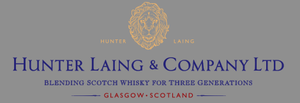
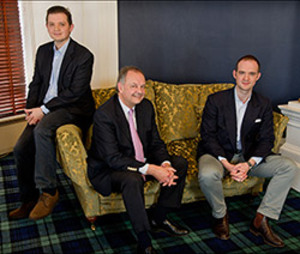
Founded in 2010 as a breakaway company from the original Douglas Laing company which retains its original name and headquarters,run by Fred Laing and his daughter Cara. The new company Hunter Lain is headed by Stewart Laing and his 2 sons Scot and Andrew. Brands include Old Malt Cask, Old and Rare, Douglas of Drumlanrig and the Hepburn's Choice series.
from Various Online
The Distillery: Dalmore
| Established: 1839 |
| Silent since: False |
| Address: Alness, Ross-shire IV17 OUT, UK |
| → website |
The Dalmore distillery, located north of Inverness, was founded in 1839. Founder Alexander Matheson didn"t actually distill the whisky himself there; he immediately leased the distillery to the Sunderland family and they were involved in the operations until 1867. In 1874 Dalmore"s number of stills was increased from two to four; quite an exception in those days. After Alexander Matheson died in 1886, Sir Kenneth Matheson sold the distillery to its former operators; brothers Alexander, Andrew & Charles Mackenzie.
After that things become confusing; according to some sources "American Brands" was renamed to "JBB (Greater Europe) plc." in 1995, but others claim that that was the new name for "Whyte & Mackay Distillers", assumed in 1996.
Whatever the case, all sources seem to agree that JBB Greater Europe was bought from Fortune Brands by Kyndal Spirits in 2001, who then decided to change the name back to Whyte & Mackay Ltd. Yes, I told you it was a bit confusing, didn"t I?
Long before the legal battle about compensation for the damages between Andrew Mackenzie and the Royal Navy was over (the debate eventually reached the House of Lords) Dalmore distillery resumed production again. Apparently the distillery enjoyed a few decades of relative peace until its floor maltings were replaced with a so-called Saladin box in 1956. The Saladin maltings remained in use until 1982, after which Dalmore purchased its malted barley centrally, like most other distilleries these days.
In 1966 the number of stills was expanded from 4 to 8, putting Dalmore in the top 25 distilleries, capacity-wise. Large drinks corporations mingle and merge like swingers from the 1960"s and the story with Dalmore is little different. In 1960 Mackenzie Brothers Ltd. had already merged with Whyte & Mackay to form Dalmore-White & Mackay Ltd. which later became Whyte & Mackay Distillers Ltd. In 1990 White & Mackay Distillers Ltd. was purchased by American Brands.
In 1917 the focus shifted from malts to mines at Dalmore; the navy used the location for the production of deep-sea mines. In 1920 they left the distillery again - mostly in ruins after an explosion and a fire. Needless to say, Andrew Mackensie undertook legal action against the Royal navy.
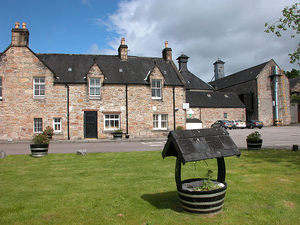
The Dalmore distillery, located north of Inverness, was founded in 1839. Founder Alexander Matheson didn"t actually distill the whisky himself there; he immediately leased the distillery to the Sunderland family and they were involved in the operations until 1867. In 1874 Dalmore"s number of stills was increased from two to four; quite an exception in those days. After Alexander Matheson died in 1886, Sir Kenneth Matheson sold the distillery to its former operators; brothers Alexander, Andrew & Charles Mackenzie. Dalmore twelve years old Scotch whisky (old bottling)
Dalmore isn"t the only distillery owned by Whyte & Mackay when I write this; the distilleries Old Fettercairn and Isle of Jura are part of their "stable" as well. The same goes for Tamnavulin, which was silent for a few years until United Spirits took over the business in 2007. The force behind this all is Indian mogul Vijay Mallya.
Let"s hope that the new ownership will bring Dalmore back on track. During the 1990"s their 12yo "standard" bottling was an dependable favourite of mine; always a good single malt whisky for a very decent price - and without too much batch variation. The 21yo and 30yo official releases were slightly better, but in my mind that didn"t justify the significant price difference.
2004 - a brand new visitor centre is added to the malt whisky distillery in Ross-shire.
2007 - United Spirits (the company of Indian politician and mogul Vijay Mallya) takes over Whyte & Mackay.
At a certain point it becomes very difficult to make an even better whisky - even with the investment of a lot of capital, time and energy. Making an even more expensive whisky is fairly easy in comparison if you"re the one making the price tags. Making those price tags seems to have become part of the job description of Dalmore"s "Master Blender" since Richard Patterson assumed this position a few years ago. In 2007 Richard was proudly promoting a bottle that was said to contain single malt whiskies from 1868, 1878, 1926, 1939 en 1961. The price? A mere 68,000 dollars.
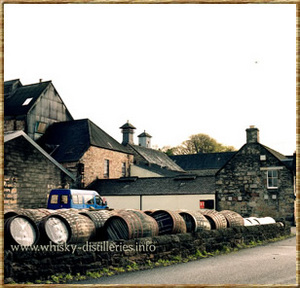
I can"t tell you if the whisky was actually any good because I haven"t tried it myself. Nevertheless, I dare to assume that my "cumulative" pleasure would be higher if I invested my money in bottles of the more affordable expressions like the 12yo and the "Cigar Malt" depicted at the right. The princely sum of 68,000 dollars would buy me circa 1500 bottles of the regular 12 years old malt whisky. Even if I emptied one bottle each week, that stock would last me for another thirty years. I would have to learn to live without the nice "gift wrapping" that comes with the expensive bottle, but I"ll have time to learn to live with that...
In the new Millenium
2001 - Mother company Fortune Brands sold JBB Greater Europe to Kyndal Spirits, who decided to change the name (back) to Whyte & Mackay Ltd. one year later. Or at least as far as I can understand the peculiar financial history...
For a while, one of the most expensive bottles of whisky ever sold was a 62 years old Dalmore single malt whisky, sold at an auction by McTears. This particular bottle switched owners for a little over 25,000 GBP. According to our fellow malt maniac Charlie MacLean, the buyer it shared it with his friends; the bottle was finished in a single evening. Well, I hope they enjoyed it in good spirits but I won"t put this one on my shopping list. It just doesn"t make economical sense...
It"s difficult to produce, market and distribute a drinkable whisky for less than 10 Euro"s a bottle. Let"s assume that"s roughly the minimum price of a bottle of (blended) whisky; you are paying mostly for the flavoured alcohol inside the bottle. The added value of the more expensive whiskies consists partly of a higher "intrinsic quality", for example because the whisky was matured longer or contains a higher percentage of malt whisky. However, as the "street value" of a bottle of whisky grows, a larger portion of the price is invested in stuff like PR, marketing and packaging. In my experience the Law of Diminishing Returns applies here - a 250 Euro bottle of whisky is rarely five times better than a 50 Euro bottle.
While the importance of "quality" diminishes in the "ultra premium" segment, the "social" componant increases. Especially in America and Asia expensive whiskies are not merely drunk for their taste and intoxicating qualities; the (perceived) effects on one"s status is even more important. In this respect, the "image" of a brand is paramount.
People that are primarily interested in outwards appearances often know little about the product. That means that they mainly select their whiskies based on the price of the bottle (more expensive = better) and the age of the whisky inside the bottle (older = better). The whisky industry was delighted when they discovered that there was a large audience out there that was more interested in expensive whisky than in good whisky.
Trivia:
- Dalmore was the first malt whisky ever to be exported (to Australia) (1870).
- The selection of "siplings" below includes mostly "core range" official bottlings; indpendent releases are hard to find. Although Dalmore can hardly considered to be an "obscure" distillery, I haven"t actually tried that many different expressions so far. The standard 12yo bottling has kept my happy throughout many evenings in the early 1990"s, but after that the focus of my search for the perfect malt whisky shifted to single malts that I hadn"t tried before.
from Malt Madness
The Owner: Whyte & Mackay
| Established: 1844 |
| Silent since: False |
| Address: Dalmore House, 310 St Vincent Street, Glasgow, Scotland G2 5RG |
| → website |
March 2009 saw John Beard, former chief executive of Bacardi Brown Forman, replace Ashwin Malik as chief executive.
In October 2009, Whyte and Mackay Master Blender Richard Paterson announced on his blog site that the 30 year old Whyte and Mackay whisky had been voted the best blended whisky in the world in two different prestigious whisky competitions.

Whyte and Mackay were sponsors of the English football team Leeds United from 2003 to 2006, but their backing did little to save the club from a financial crisis which cost them their place in the Premier League. The brand currently sponsors Edinburgh club Hibernian in the Scottish Premier League, the PDC Premier League Darts and the Force India Formula One racing team (also owned by Dr Vijay Mallya).
In 2009 the company expanded into Social Media setting up Twitter accounts for Whyte and Mackay whisky and Jura Superstition. It also launched an online and offline game comprising of Twitter and GPS updates called the Whyte and Mackay Safari Hunt.
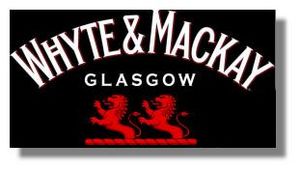
Charles Mackay and James Whyte started a company as whisky merchants and bonded warehousemen in Glasgow in 1882. W&M Special was their first blended whisky and it was successful in the United Kingdom and other English speaking countries around the world (particularly Australia, Canada, New Zealand and the United States). After World War II they focused on the home market and now sell more than 1 million cases a year.
The company transcends markets including Single Malt and Blended Scotch Whiskies, Liqueurs, and Vodkas. Their brands include the W&M 13/19/22/30/40yr old blends; Dalmore, Isle of Jura, and Fettercairn Single Malts; Glayva liqueur; and Vladivar Vodka.
Whyte & Mackay Ltd is a Scottish company producing alcoholic beverages. It was founded in 1844 and is based in Glasgow, Scotland. Since May 2007 Whyte & Mackay has been owned by United Breweries Group, a large Indian conglomerate.
from Wikipedia
The Owner: Emperador
| Established: 1990 |
| Silent since: False |
| Address: |
| → website |

Emperador Inc. (EMP) is a holding company which operates an integrated business of manufacturing, bottling and distributing distilled spirits and other alcoholic beverages from the Philippines and Europe.
Through Emperador Distillers, Inc. (EDI), EMP has established its identity in the Philippine alcoholic beverages business with steady growth and production of high quality liquor. EDI is the Philippines’ largest liquor company and the world’s largest brandy producer.
The consolidated product portfolio is comprised of domestic and foreign brands led by Emperador Light, Emperador Deluxe, Andy Player Whisky, Smirnoff Mule, The Bar, The Dalmore and Jura Scotch single malt whiskies, and Fundador.
In 1990, Emperador Brandy was launched as Philippines’ first brandy label. This brandy was produced through a delicate blending and aging process. The result is a brandy of distinctive aroma flavor and consistent mellow quality. One look, one sip and it becomes clear to all that Emperador is a world-class product that is easily affordable.
Through dynamic marketing and by establishing a reputation for product quality, EDI created demand for brandy in the Philippine spirits market. Emperador Brandy has now started to expand its brand footprint outside the Philippines. It holds its position as the world's largest brandy by volume and it is now being distributed in 40 countries across Asia, North America, Africa, Middle East, and Europe.
In 2010, Emperador Light was introduced in response to a growing market for alcoholic beverages with lower alcohol content and targeted the younger alcoholic beverage consumers. In 2014 and 2015, the company acquired Whyte and Mackay, and Bodegas Fundador, respectively. Through Whyte and Mackay Group Limited (WMG or Whyte and Mackay) of United Kingdom, EMP has entered the global Scotch whisky business.
WMG has a rich heritage of a Scottish spirits company, which is the fifth largest Scotch whisky manufacturer in the world, and its products are distributed in over 50 countries. And with EMP’s most recent purchase of the brandy and sherry business from Beam Suntory (Bodegas Fundador, completed in February 2016), EMP has fortified its brandy and sherry business, and has strengthened its overall liquor business.
As a global company, Emperador Inc. is now able to capitalize on its worldwide distribution network catapulting its full range of brandy and whisky products led by Emperador and Fundador brandy as well as single malt whisky The Dalmore and Jura plus Whyte & Mackay and John Barr blended whiskies.
Through Emperador Distillers, Inc. (EDI), EMP has established its identity in the Philippine alcoholic beverages business with steady growth and production of high quality liquor. EDI is the Philippines’ largest liquor company and the world’s largest brandy producer.
The consolidated product portfolio is comprised of domestic and foreign brands led by Emperador Light, Emperador Deluxe, Andy Player Whisky, Smirnoff Mule, The Bar, The Dalmore and Jura Scotch single malt whiskies, and Fundador.
In 1990, Emperador Brandy was launched as Philippines’ first brandy label. This brandy was produced through a delicate blending and aging process. The result is a brandy of distinctive aroma flavor and consistent mellow quality. One look, one sip and it becomes clear to all that Emperador is a world-class product that is easily affordable.
Through dynamic marketing and by establishing a reputation for product quality, EDI created demand for brandy in the Philippine spirits market. Emperador Brandy has now started to expand its brand footprint outside the Philippines. It holds its position as the world's largest brandy by volume and it is now being distributed in 40 countries across Asia, North America, Africa, Middle East, and Europe.
In 2010, Emperador Light was introduced in response to a growing market for alcoholic beverages with lower alcohol content and targeted the younger alcoholic beverage consumers. In 2014 and 2015, the company acquired Whyte and Mackay, and Bodegas Fundador, respectively. Through Whyte and Mackay Group Limited (WMG or Whyte and Mackay) of United Kingdom, EMP has entered the global Scotch whisky business.
WMG has a rich heritage of a Scottish spirits company, which is the fifth largest Scotch whisky manufacturer in the world, and its products are distributed in over 50 countries. And with EMP’s most recent purchase of the brandy and sherry business from Beam Suntory (Bodegas Fundador, completed in February 2016), EMP has fortified its brandy and sherry business, and has strengthened its overall liquor business.
As a global company, Emperador Inc. is now able to capitalize on its worldwide distribution network catapulting its full range of brandy and whisky products led by Emperador and Fundador brandy as well as single malt whisky The Dalmore and Jura plus Whyte & Mackay and John Barr blended whiskies.
from Emperador
The Owner: Alliance Global Group
| Established: 2006 |
| Silent since: False |
| Address: Quezon City |
| → website |
Alliance Global Group, Inc., styled on its logo as AllianceGlobal and also known as Alliance Global, Inc. (AGI), is a large holding company with business activities spanning the food and beverage industry (including both production and restaurant operations), gambling, and real estate development.
It is one of the largest companies based in the Philippines, and is controlled by the family of its chairman and CEO Andrew L. Tan. The company headquarters is in the Bagumbayan area of Quezon City in the Manila metropolitan area (the national capital region of the Philippines) on the island of Luzon.
Alliance Global Group is composed of several companies, including:
It is one of the largest companies based in the Philippines, and is controlled by the family of its chairman and CEO Andrew L. Tan. The company headquarters is in the Bagumbayan area of Quezon City in the Manila metropolitan area (the national capital region of the Philippines) on the island of Luzon.
Alliance Global Group is composed of several companies, including:
- Emperador, Inc. – A beverage production company best known for its Emperador brandy. As of December 2015, Emperador is also the owner of Fundador Pedro Domecq, Spain’s largest and oldest brandy, as well as three other brands, Terry Centenario, Tres Cepas, and Harveys, having acquired them from Beam Suntory. In 2014, Emperador, Inc. purchased the Scottish whisky company Whyte and Mackay from India-based United Spirits Ltd for 430m.
- The Bar Vodka
- Megaworld Corporation, the Company's Main Real Estate Arm.
- Empire East Properties / Megaworld Central Properties
- Travellers International
- McDonald's main Franchise in the Philippines.
- Global Estate Resorts Inc

from Wikipedia
